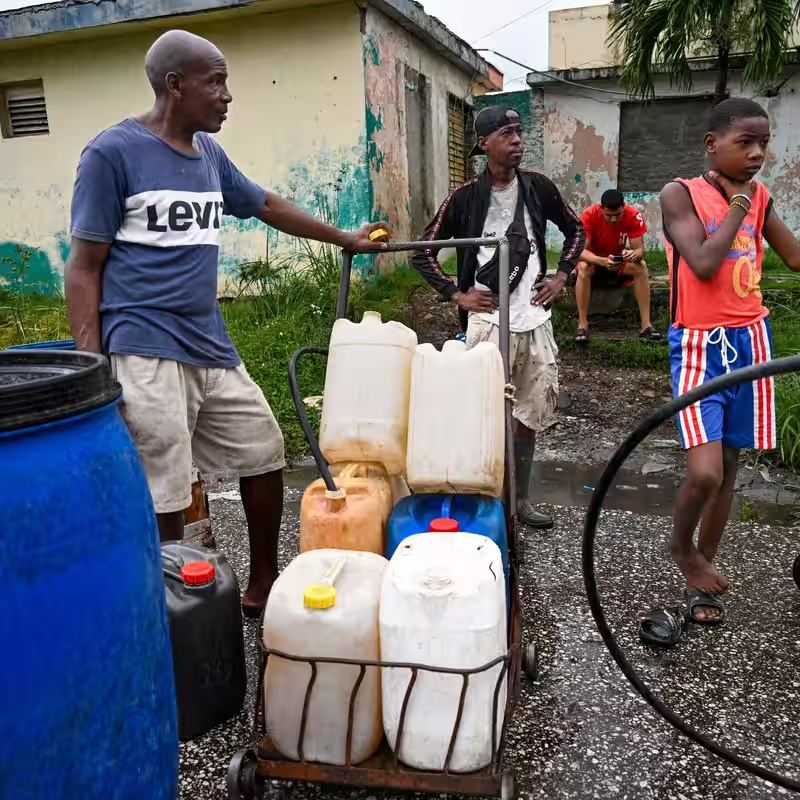Hurricane Melissa—one of the most powerful Atlantic storms ever recorded—has left a trail of destruction across Jamaica and is now bearing down on Cuba, prompting a massive international relief effort led by the United Nations. With at least 57 deaths feared and critical infrastructure in ruins, the U.N. is mobilizing emergency supplies, medical kits, and personnel to support recovery in a region already strained by climate vulnerability and economic hardship.
UN Aid Deployment After Hurricane Melissa
The United Nations has activated its regional humanitarian network to respond to the unfolding crisis. According to U.N. spokesman Stéphane Dujarric, more than 2,000 emergency kits are being airlifted from Barbados to Jamaica as soon as the country’s airports reopen—likely by Thursday. Additional relief stocks are staged at a U.N. humanitarian depot in Panama, ready for rapid deployment.
In Cuba, U.N. teams are already on the ground coordinating with local authorities to support the evacuation of nearly 900,000 people from eastern provinces. The World Food Programme (WFP) has pre-positioned nearly 900 tons of food to assist 86,000 people in Haiti over the next two weeks.
Hurricane Melissa’s Unprecedented Impact
Melissa made landfall in Jamaica on Tuesday, October 28, 2025, near New Hope as a Category 5 hurricane with sustained winds of 185 mph—stronger than Hurricane Katrina and tied for the second-most intense Atlantic landfall on record. The storm’s central pressure dropped to 892 millibars, among the lowest ever measured at landfall.
Jamaica’s health system is in crisis. Spanish Town Hospital—one of the nation’s largest—entered full emergency mode due to flooding risks. Black River Hospital in St. Elizabeth Parish was evacuated after floodwaters breached the facility, forcing the relocation of 75 patients under perilous conditions.
Children and Vulnerable Populations at Risk
UNICEF estimates that 1.6 million children across the Caribbean are now at risk due to Hurricane Melissa. The agency is rushing water containers, hygiene kits, and nutritional supplies to the region. In Haiti, the U.N. migration agency has prepared 100 emergency shelters to house displaced families.
Climate Injustice and Recovery Challenges
Caribbean leaders have long warned that their nations—despite contributing minimally to global emissions—are on the frontlines of climate-driven disasters. Hurricane Melissa exemplifies this injustice. The region requires an estimated $100 billion in investment to build climate resilience, yet international climate finance pledges remain unfulfilled.
Compounding the crisis, U.S. foreign aid cuts under the Trump administration have slashed funding for disaster preparedness and climate adaptation programs. “There’s this void and lack of leadership,” said Michai Robertson of the Alliance of Small Island States. “We’re facing storms that erase decades of progress in hours.”
Logistical Hurdles and Hope Through Tech
With over 530,000 Jamaicans without power and internet connectivity down to 42% of normal levels, communication remains a major challenge. However, some residents are staying connected via Starlink satellite internet, which has proven resilient even as traditional networks fail.
Still, experts caution that unequal access to such technology could deepen disparities in disaster response. “Underserved areas lose infrastructure first and regain it last,” said Andrew Kruczkiewicz of Columbia University’s National Center for Disaster Preparedness.
What’s Next?
As Melissa moves toward the Bahamas—with 1,400 people already evacuated from southeastern islands—the U.N. is preparing for a multi-country response. Field hospitals, mobile labs, and trauma kits are being coordinated with regional partners including Barbados, Costa Rica, Colombia, and Mexico.
Recovery will be long and costly. For now, the priority is saving lives, restoring medical services, and ensuring clean water to prevent disease outbreaks.




